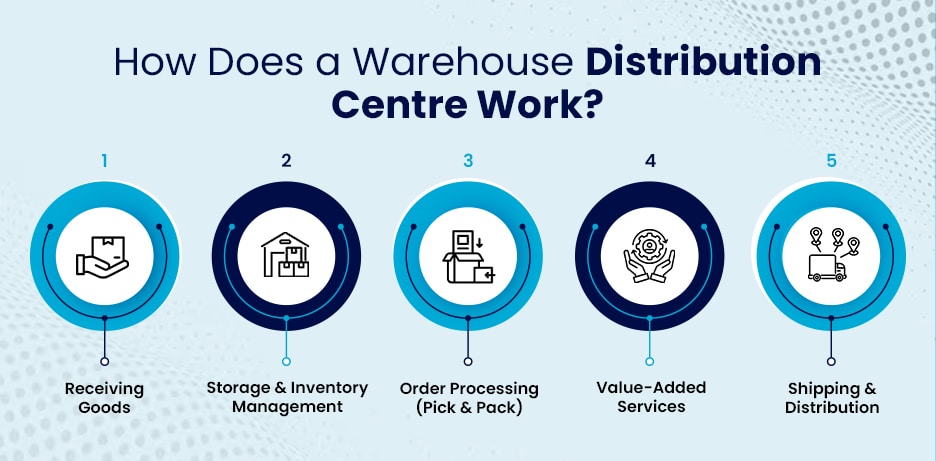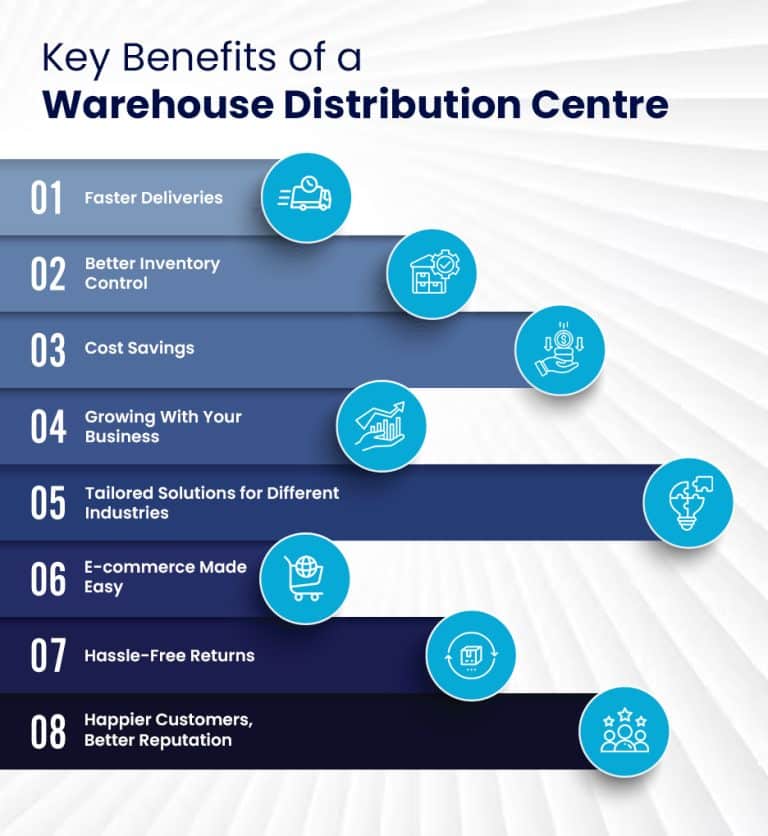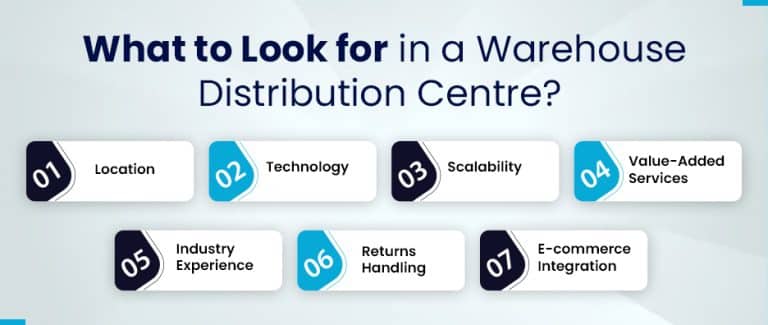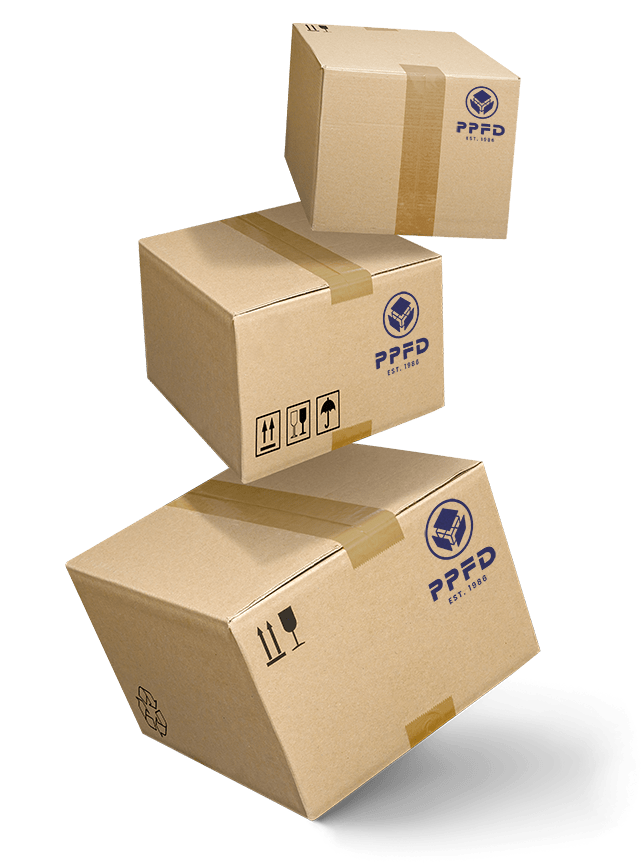
Take a look around you. Your morning cereal, the chair you’re sitting on, even the phone in your hand, all of them probably made a stop at a warehouse distribution centre before they reached you.
These centres are not just big rooms full of boxes. They’re busy hubs where products are received, sorted, packed, and sent out again, so they land in the right place at the right time. In many ways, they’re the middlemen who quietly keep our lives running smoothly.
Without them, online shopping wouldn’t be so quick, store shelves wouldn’t stay stocked, and businesses would struggle to deliver on their promises. Simply put, warehouse distribution centres make sure things move, from factories to stores, and from stores to customers.
Let’s get into all the details and see what it is, why it matters, and how it works.
A Warehouse Distribution Centre, also known as WDC, is a facility that combines storage with order processing and distribution. Talking about traditional warehouses, they mainly focus on storing products, but a distribution centre is specially designed to move goods in and out as efficiently as possible.
Modern businesses often rely on these centres because speed, accuracy, and flexibility are essential in today’s competitive market.

The most notable thing about a WDC is that it follows a well-structured process. But behind the steps, a lot is happening that keeps everything else moving seamlessly. Here’s how things work at a WDC
All the products from manufacturers, imports, or suppliers reach the centre. But before storing them, they are checked, sorted, and carefully kept in the inventory so that the items don’t get misplaced. The staff cross-checks the quantities, the quality, and even handles any damaged items before they move on. This first step sets the tone for everything that follows.
After the products are checked and stored in the dedicated space, the next steps are taken as soon as possible. Distribution centres are specially designed for fast movement, and advanced systems track every item in real time. The staff carefully note where each product is kept so that they can later pick and ship orders quickly.
Then comes picking the correct items, packing them neatly and carefully, and preparing them for shipment. Doing this is necessary for delivering correct products on time and in perfect condition. Order processing isn’t just about packing a box, it can also include specialized services like Pick and Pack Fulfillment, or even Kitting and Assembly, when products need to be bundled together.”
Not to forget about value-added services. There are a few centres that go beyond and above just storing and shipping. They can bundle items, assemble kits, prepare displays, or relabel products to meet retailer needs. These extra services save businesses time and make operations smoother.
Finally, products are sent to stores, wholesalers, or directly to customers. Routes are planned for efficiency, and tracking keeps everyone updated. This step completes the journey from the centre to your hands. For businesses that need faster turnaround, Crossdocking Warehousing cuts down storage time. And when returns happen, Reverse Logistics ensures products are handled smoothly.

It’s easy to confuse the two, so here’s a simple comparison:
| Feature | Traditional Warehouse | Warehouse Distribution Centre |
| Purpose | Long-term storage | Fast turnover & distribution |
| Order Processing | Minimal | Central function |
| Technology | Basic tracking | Advanced WMS & integrations |
| Customer Focus | Low | High, direct order fulfillment |
| Speed | Goods sit longer | Designed for quick movement |
Of course, choosing between different setups isn’t always black and white. Sometimes businesses just need extra space for a season, while others are better off building a long-term logistics partnership.
If you’re curious about how to decide, here’s a detailed piece on Short Term Warehousing vs. Long Term Partnerships. Read it to know more.
Imagine you’re running an online store that sells home décor. During the holiday season, your sales skyrocket. A traditional warehouse would store your products, but leave you struggling with order processing.
A Warehouse Distribution Centre, on the other hand, would:
The result? Happy customers, repeat business, and fewer headaches for you.

Picking the right Warehouse Distribution Centre isn’t just about finding a big building to store boxes. It’s about finding a partner that helps your business run smoothly and keeps your customers happy. Here are a few things you’ll definitely want to check:
Where the centre is located can make or break your delivery times. If it’s close to your main customer base, shipping is faster and cheaper. A smart location doesn’t just save money; it gives you an edge over competitors who take longer to deliver.
Forget old-school paper tracking. A good warehouse runs on a strong Warehouse Management System (WMS). Real-time tracking means fewer mistakes, more accurate inventory, and less stress for you and your team. It’s like having eyes on every product, all the time.
Your business won’t stay the same size forever (at least, we hope not!). The centre should be able to grow with you, handling seasonal peaks, big sales, or long-term growth without missing a beat. You want a partner that can keep up, not one that holds you back.
The best centres don’t just ship boxes. They offer extras like bundling products, assembling kits, or creating promotional packaging. These services save you time, reduce headaches, and help you offer something special to your customers.
Not all products are handled the same way. Clothing needs careful seasonal storage, while auto parts need secure, precise handling. A centre with experience in your industry already knows the challenges and how to handle them. That’s peace of mind you can’t put a price on.
Like it or not, returns are part of doing business. A good centre makes it easy, checking items quickly and updating inventory right away. Smooth returns keep customers happy, and happy customers usually come back to buy again.
If you sell online, this one’s huge. A centre that connects directly to Shopify, Amazon, or WooCommerce means your orders flow in automatically, without you having to lift a finger. Less manual work, fewer mistakes, and faster shipping, it’s a win all around.
At the end of the day, Warehouse Distribution Centres are the hidden engine that keeps modern business moving. They take care of the tricky parts – stocking, packing, shipping, and even returns, so companies can focus on growing and keeping customers happy.
And if you’re looking for a partner who gets this right, that’s where PPFD comes in. They’re not just about storage space; they’re about solutions that scale with your business. Whether you’re shipping a few products or thousands, PPFD keeps things running smoothly behind the scenes, so you can stay focused on the bigger picture.
With PPFD, logistics stop feeling like a headache and start becoming a real advantage.
Most facilities have strict security measures like 24/7 monitoring, access controls, and climate controls to protect goods from theft or damage.
Distribution centres are used to it. They can scale staffing and resources during peak times, so your orders don’t get delayed when demand suddenly jumps.
A good rule is to compare the time and money you spend managing storage, shipping, and returns yourself versus outsourcing it. If logistics are eating up focus and resources, it’s usually time to partner up.
Share :
get started
Our team is eager to partner with you and show why PPFD is the go-to choice for businesses aiming to streamline their logistics and distribution.
